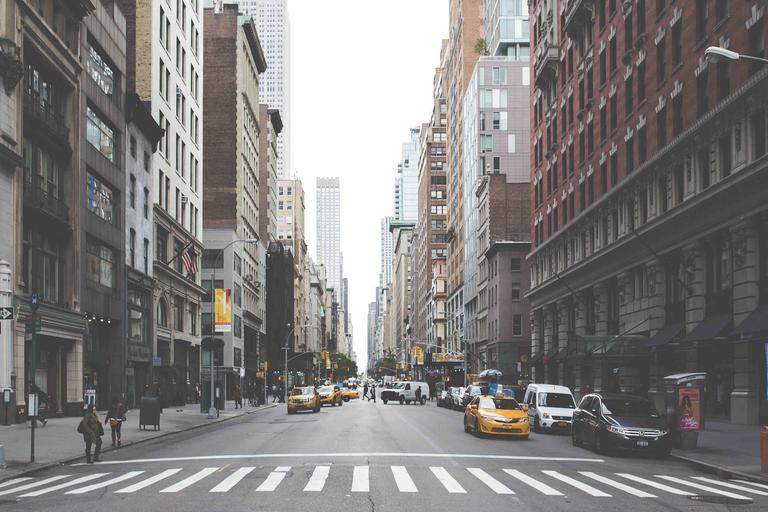
Crosswalks are a part of road safety devices that were introduced to help for safer use of the road and also to help aid traffic organization.
Crosswalks are meant for pedestrians’ use, but some drivers have abused them by parking on them and within them. Therefore, is it illegal to park if a crosswalk is within?
Yes, it is illegal to park if a crosswalk is within 25 to 30 feet and therefore not allowed to avoid confusing pedestrians who are crossing the road.
Is it Illegal to Park if a Crosswalk is within?
Yes, it is illegal to park your car if a crosswalk is within 25 to 30 feet. As a driver, you are not supposed to park too close to a crosswalk in order not to constitute a nuisance to the road, distract drivers and pedestrians and possibly cause avoidable accidents.
The closest to a crosswalk you are allowed to park your car as a driver is 30 feet away. This is because 30-feet equals more than 11 steps away from the curb at the road intersection.
That means the closest your car bumper will be to the intersection is about 12 steps away. To be double sure and double safe, if you can, always try to park the farthest as possible from a crosswalk or an intersection.
Reasons Not to Park Close to Crosswalks
- For Safety Purposes: Parking too close to crosswalks might lead to needless accidents between pedestrians and drivers. A crosswalk is known to be a safe space for pedestrians, parking too close to pedestrians’ safe space might constitute disorder, confusion, and it can lead to accidents.
- To Avoid Collision: It is illegal to park close to crosswalks because it might cause a collision with other cars coming from a different road leading into the intersection.
If you park close to a crosswalk, it means you are close to an intersection, and an intersection is what links a differently routed road to another road.
Many times, drivers from the other road don’t expect any vehicle to be parked close to the intersection, and if this logic hasn’t been followed, it will invariably cause a collision of cars.
Other Places you are Not Allowed to Park
1. Private Driveways
Parking in someone else’s driveway will block them from entering their property or coming out of it, and this constitutes a violation of their fundamental human rights to movement.
It is illegal to park in someone else’s driveway, and if caught, you will get a parking ticket for it. Moreover, the person can tow your car for parking and blocking his driveway.
2. Already Occupied Spaces
Parking somewhere that has already been occupied by another car means you are parking right beside the car. This term is called ‘double parking’, and it is illegal to double park.
3. In Front of a Fire Hydrant
You cannot park directly in front or too close to a fire hydrant. This way, you will be preventing the usage of the fire hydrant if there is a fire around the area.
Also, you cannot park too close to a fire station, as you might just disrupt them from their duties.
4. Pedestrian Safety Zones
It is illegal to park anywhere that has been tagged a pedestrian safety zone. Pedestrian safety zones include marked crosswalks, road intersections, public gardens, etc.
Advantages of Crosswalk
- Protects Pedestrians: Crosswalks improve the safety and security of pedestrians on roads. With crosswalks marked and adhered to, pedestrians will hardly be more apprehensive than they need to be because they know that there are safe zones for them to cross to the other side whenever they want to.
- Improves Traffic: With marked areas, drivers know where and where not to park their cars. They also know how to behave around pedestrians and the laws to follow once they see a pedestrian on a crosswalk, such as a zebra crossing.
- Reduces Collisions: Crosswalks at intersections reduce collisions because it dictates where drivers can and cannot park their cars, and how far away they should park.
A crosswalk starts right on the curb of one side of the road and ends on the curb of the other side of the road and comes in different types such as:
- Informal crossings
- Zebra crossing, signal-controlled crossing, and
- Multi-user crossing.
For safer use of the road and better control of traffic, experts, in conjunction with the government devised various traffic and road regulations, indicating them with maps, paintings, drawings, information beams, employing traffic wardens, and educating road users on how to use the road. This, they did in the bid to curb road accidents caused by impatient drivers and impulsive pedestrians.
Road users, especially those that flout or disobey the rules and navigational signs that have been laid on the road and by roadsides to guide them are usually charged with committing a crime, and these offenders, depending on the gravity of the disobedience get punished for their actions. Punishments ranging from fines to jail time are consequences for disobeying these rules.
Conclusion
Drivers should adhere to the rules that govern roads and their use of them. They should give pedestrians utmost respect, and acknowledge crosswalks as they approach.
One of the ways a driver can acknowledge a crosswalk is by making sure he or she doesn’t park when a crosswalk is within. If drivers need to park, they must ensure they park at least 30 feet away from the nearest crosswalk.

